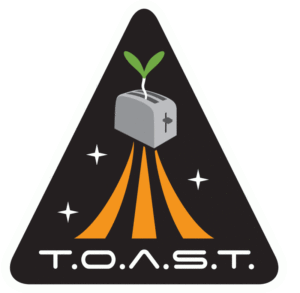
Some might call Simon Gilroy a talented gardener. In fact, you could even say his botanical abilities are out of this world.
Gilroy is a University of Wisconsin-Madison botany researcher who believes the ability to grow plants for food in space isn’t galaxies out of reach. If conditions on Earth were to ever become unfavorable, sustaining human life in space would be crucial. There would be a need for outer space agriculture to fuel future generations. That’s where Gilroy comes in.
“We want to be able to grow plants efficiently [in space] and be able to do it again, and again, and again. That is a part of human life support,” Gilroy said.
Gilroy’s previous research experiments were successful in growing plants on the International Space Station (ISS). As the partnership with NASA continues, he makes preparations for another experiment next week November 28th, 2017: a space launch containing live plants.
The botanical research with NASA started with a student-led program at Penn State. Gilroy taught and encouraged students at the university to grow plants in a chamber in space.

Since coming to UW-Madison, he organized a new research project titled Test of Arabidopsis Space Transcriptome. Two of those projects have been launched into space: BRIC-17 TOAST and BRIC-19 TOAST II.
The TOAST experiments answered questions about biological reactions during space stress by growing plants on the ISS. Simon said the upcoming launch in November will be similar to TOAST I and II and will uncover the mysteries behind plant growth in outer space conditions.
Gilroy and his colleagues plan to arrive at the Kennedy Space Center several days prior to the expected launch date. They will plant and prepare the seedlings, and show the astronauts how to take care of them on the ISS. Upon successful entry into low-earth gravity, seedlings of Arabidopsis thaliana, the model plant species used for plant research, will be housed in a growth chamber cleverly called “The Veggie,” which will provide light and a desirable atmosphere for the plants. Seedlings will be kept in the growth chamber for two weeks.
Both natural versions and genetically engineered versions of A. thaliana will be grown for this experiment. The genetically engineered versions are being tested because previous flight data showed they were resistant to spaceflight stress. Gilroy expects these versions of the seedlings will survive better in space conditions.
After two weeks of growth, the plants will be chemically treated and frozen until they return to UW-Madison about a month later. Gilroy lab researchers will analyze the data using molecular biology techniques to collect data on how active genes were during their journey on the ISS. Researchers use gene activity, or gene expression values, to understand which genes are significant in ensuring the plant functions properly. Gilroy believes a high expression of a gene in Arabidopsis during spaceflight could mean the gene is important in dealing with space-related stresses, such as low gravity or low oxygen.
So why should we be concerned with the ability to grow plants in space?
“If we are going to live in space for any extended period of time, not a camping trip to space, we have to be able to feed the astronauts, create atmospheres, and purify water,” Gilroy said. “The only way we know how to do this on Earth is based on plant biology.”
Gilroy said plants are essential to sustaining human life, so they will be a necessary life support system if we ever colonize another planet. Additionally, sending plants into space environments allows researchers to explore the reason why they observe biological changes under those conditions.
“Space is a weird environment, and biology is being put in an environment it has never evolved to deal with,” Gilroy explained. “There are lots of stresses and stimuli that cannot be applied on earth, but they tell you how plants work.”
Plant biology has not yet had to survive and evolve in outer space conditions, so there are many unknowns regarding how biological processes will be affected by these stresses.
The upcoming launch will yield data crucial to understanding life in space, and will set us on course for colonizing another planet. Consider our rapidly changing environment due to global warming, or the threat of nuclear war that could potentially destroy our planet. If Earth were to ever become uninhabitable, there needs to be a backup plan in place. I believe exploring and discovering ways to live and thrive on another planet is vital to future generations.
Savana Lipps is an undergraduate plant biology researcher in the Gilroy Lab. Her areas of study include plant pathology and life science communication.
